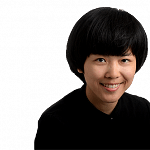-
VIEW IT / CHILDHOOD MEMORIES
-
WHERE: Pearl Lam Galleries, 03-02 Gillman Barracks, 9 Lock Road, and 01-06 Gillman Barracks, 5 Lock Road
WHEN: Thursday to March 13, 11am to 7pm (Tuesday to Saturday), noon to 6pm (Sunday), closed on Monday
ADMISSION: Free
Singapore Art Week
Art Titans: Yinka Shonibare
The Straits Times speaks to three internationally acclaimed artists showing at Singapore Art Week


Face-to-face with headless, caramel-coloured mannequins, posed mid-action and dressed in vivid Dutch wax-printed fabric - this dramatic encounter awaits visitors to the first show here by well known British-Nigerian artist Yinka Shonibare.
The exhibition - which is organised by Pearl Lam Galleries in Gillman Barracks and runs from Thursday till March 13 - mirrors Shonibare's love for surrealism and the poetic. It also includes familiar motifs from his more than twodecades-long body of work, such as Dutch wax-printed cloth.
The textile, inspired by Indonesian batik, has a history that stretches back to the 1800s, when it was made in the Netherlands and exported to Africa, where it has become a cultural symbol.
The fabric is a signature element in Shonibare's work, which frequently explores the notion of identity through political and historical contexts, such as colonialism and globalisation.
The four new sculptures on show fit within this larger body of work. Their inspiration, however, comes from a fresh and deeply personal place - memories of his childhood in Nigeria and the folklore he heard which have stayed with him.
Over the telephone from his East London studio, the 53-year-old artist, who has partial paralysis from a spinal inflammation when he was a teenager and uses a wheelchair, tells The Straits Times: "I wanted to move away from the kind of global trauma that is happening at the moment. There are just too many wars and violent acts going on around the world. What about humanity and the self?"
His pursuit of what it means to be human found emotional resonance in his current phase of life.
The father of a 24-year-old son says: "Most people, when they get into their 50s, they start to look back a bit. It's something that happened naturally for me."
He was born in London in 1962, while his father was a law student there. When he was three, his father graduated and the family moved back to Lagos, Nigeria. They lived in a middle-class neighbourhood, and Shonibare, the third of four children, enjoyed a happy childhood.
He waxes lyrical about seeing the "most incredible butterflies" in the garden at home and hearing captivating folk stories from the Yoruba people, a Nigerian ethnic group to which he belongs, about the power of twins to bring fortune or calamity upon their household.
He adds that he spent more time playing than studying, even though his corporate lawyer father and housewife mother were strict about his education.
"When I was in the car with my dad going somewhere in the morning and I wasn't doing anything, he would say, 'Stop looking around. Just get your book out of your bag and read it.'"
These reminiscences, to some measure, are embodied in his new sculptures such as Boy Balancing Knowledge and Ibeji (Twins) Riding A Butterfly, which he says are "a combination of fictitious and real memories".
The works were executed with the help of assistant artists because of his physical disability.
The exhibition also includes a series of screen prints new to his body of work.
"I've always liked drawing," Shonibare says. "I trained as a painter - a lot of people don't know that - and I used to make prints, but my work evolved into sculpture, photography. I wanted to come back to drawing because I really enjoy it."
The imagery in his screen prints references Yoruban stories about twins as well as his experience of negotiating between "twin cultures" - his Nigerian heritage and British culture.
He moved back to London at the age of 17 to study fine art, graduating first from the Byam Shaw School of Art (now part of Central Saint Martins), then Goldsmiths college with a master of fine arts.
It was a teacher's comment about how he should be making "authentic African art" that led him to search for symbols of African culture and learn of the complex history behind Dutch wax-printed fabric at an African textile shop in a London market.
He began using the fabric in his works and two of his early pieces were bought by advertising and art mogul Charles Saatchi. Shonibare was later included in the seminal exhibition Sensation: Young British Artists From The Saatchi Collection in 1997, which featured other rising stars such as Damien Hirst and Tracey Emin, and he was nominated for the British art world's prestigious Turner Prize in 2004.
His works on show here are priced for sale from upwards of US$10,000 (S$14,400) for a screen print and US$150,000 for a sculpture. They will be exhibited in an unused gallery in Block 5 of Gillman Barracks, while Pearl Lam Galleries' original space in Block 9 will screen a documentary about him and his 2005 video work, Odile And Odette.
On the new developments in his art, which make their world premiere here during Singapore Art Week, Shonibare says: "I'm interested at the moment in the idea of the universal human being. I want to go back to who we are as people. Despite all the conflicts that we're having, at the end of the day, we're more or less the same."
•The Straits Times is the official media partner of Singapore Art Week.
For more stories on Art Week, go to str.sg/ZHe4
Join ST's Telegram channel and get the latest breaking news delivered to you.
A version of this article appeared in the print edition of The Straits Times on January 19, 2016, with the headline Art Titans: Yinka Shonibare . Subscribe

